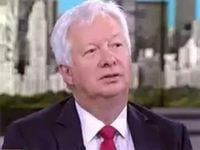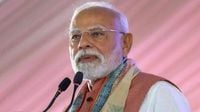Global economic winds are shifting, and India finds itself at the center of a storm whipped up by new U.S. sanctions, volatile oil prices, and a bold domestic push to elevate the rupee on the world stage. In October 2025, a confluence of international and domestic developments has left policymakers, investors, and ordinary citizens alike weighing the risks and rewards of India’s emerging market path.
According to The Economic Times, the latest round of U.S. sanctions targeting major Russian oil companies has sent shockwaves through global energy markets. The immediate result? Oil prices have jumped, and countries like India—long reliant on discounted Russian crude—are scrambling to secure alternative supplies. Geoff Dennis, a well-known emerging markets analyst, captured the uncertainty, saying, “As ever, these things are very hard to predict, especially when President Trump is involved. You do not know how persistent he will be on the sanctions front.”
Dennis acknowledged that while the sanctions have driven up oil prices, there’s a silver lining: both China and India have been reducing their imports of Russian oil, a trend he believes could be welcomed by the broader international community. Still, he cautioned, “For India, it means you have got to find the oil somewhere else and, of course, that is a challenge.” This supply conundrum arrives at a politically sensitive time. As Dennis noted, “One of the things Trump was hoping to have over the holiday period… was gasoline prices ticking lower still and that is probably not going to happen if oil prices continue to rise or stay as firm as they have after these sanctions were imposed.”
Policymakers in Washington are now faced with a dilemma: how high can oil prices go before they start to bite at home? “They must now be very careful about how high oil is allowed to go,” Dennis warned, highlighting the delicate balance between foreign policy objectives and domestic economic realities.
Yet, amid this energy turmoil, there are signs of a potential thaw in U.S.-China trade tensions. President Trump’s decision to meet Chinese President Xi Jinping at the ASEAN summit in late October 2025 has raised hopes that the world’s two largest economies might pull back from the brink of another trade war. Dennis offered his perspective: “What is so interesting about what Trump does is that a few days he was going to meet Putin and not meet Xi and now he is going to meet Xi and not meet Putin. It is a sort of roller coaster and as they say you have to take each day as it comes.”
The stakes are high. A meeting between Trump and Xi could signal progress on several contentious issues, including China’s ban on rare earth exports to the U.S. and the threat of a dramatic escalation in tariffs. “If he is going to meet Xi on the sidelines of this conference in Asia, it does indicate some positivity… hopefully getting to the point where China’s decision to ban exports of rare earth to the U.S. could be eased going forward,” Dennis remarked. He added, “It also probably means the threat that we had from Trump of bumping up Chinese tariffs and U.S. imports from China up by another 100% is not going to happen.” Such a development, Dennis concluded, would be “a positive development for financial markets.”
Investors, meanwhile, are left searching for a playbook in an environment where the old rules seem to be shifting. Dennis advised against the traditional safe havens of gold and silver, noting, “I do not believe you play through gold and silver. I was on another network two weeks ago saying I thought we were somewhere near the peak in gold.” Even bonds, he warned, carry risks: “Bonds are risky here frankly because we are probably going to see some more edging up of U.S. inflation in the short term.” Instead, Dennis remains bullish on equities, especially in emerging markets. “EM is outperforming developed markets by about 1200 basis points now this year which is a tremendous outperformance… You are seeing a lot of buying of EM equities on the back of the lower dollar earlier in the year.”
India’s own market performance has been something of a mixed bag in 2025. Dennis admitted, “I have got India wrong this year. I thought it would do better than it has done. It has been an underperformer, of course.” Yet, there are reasons for optimism. Inflation has dropped to just above 1.5%, and real interest rates hover near 400 basis points. “There are more rate cuts therefore to come eventually from the RBI,” Dennis predicted. While food price weakness has contributed to the low inflation, the broader economy remains resilient. “The economy still continues to look pretty good and that will be supported by the sort of restructuring if you like of the GST,” he said. He also pointed out that India’s relative valuation against China has improved, suggesting the country’s market positioning could soon turn favorable again.
But India’s ambitions extend beyond simply weathering external shocks. As reported by The Economic Times, the country is responding to President Trump’s latest tariff surge on Indian goods with its boldest financial move yet: transforming the rupee into a global trade currency. The Reserve Bank of India (RBI) has rolled out new exchange rate mechanisms and established Vostro accounts abroad, laying the groundwork for international rupee settlements. Future trade pacts are now being drafted with rupee settlement clauses, all aimed at reducing India’s dependence on the U.S. dollar and boosting economic sovereignty.
The strategy is clear, but the path forward is anything but smooth. Despite these ambitious reforms, the rupee has been Asia’s worst-performing currency in 2025, highlighting the scale of the challenge. Making the rupee a global trade currency is a long-term bet, one that requires not just regulatory tweaks but also a sustained improvement in economic fundamentals and global confidence in the Indian financial system.
Still, the government’s willingness to push ahead with such sweeping changes sends a strong message. By seeking to internationalize the rupee, India is signaling its intent to play a bigger role in shaping the rules of global commerce. The move also reflects a broader trend among emerging markets: a desire to assert greater control over their economic destinies in an era of unpredictable geopolitics and shifting alliances.
For investors, the message from Dennis is one of cautious optimism. “The way to play it is much more equities than bonds or commodities,” he advised, noting that emerging markets, especially India, could see significant tailwinds if policy and growth trends align. But he also stressed the importance of flexibility and vigilance in a world where fortunes can shift overnight.
As India navigates the twin challenges of external shocks and internal reform, one thing is clear: the country’s journey to economic sovereignty and global influence is far from over. The coming months will test the resolve of policymakers, the resilience of markets, and the confidence of a nation determined to chart its own course.


